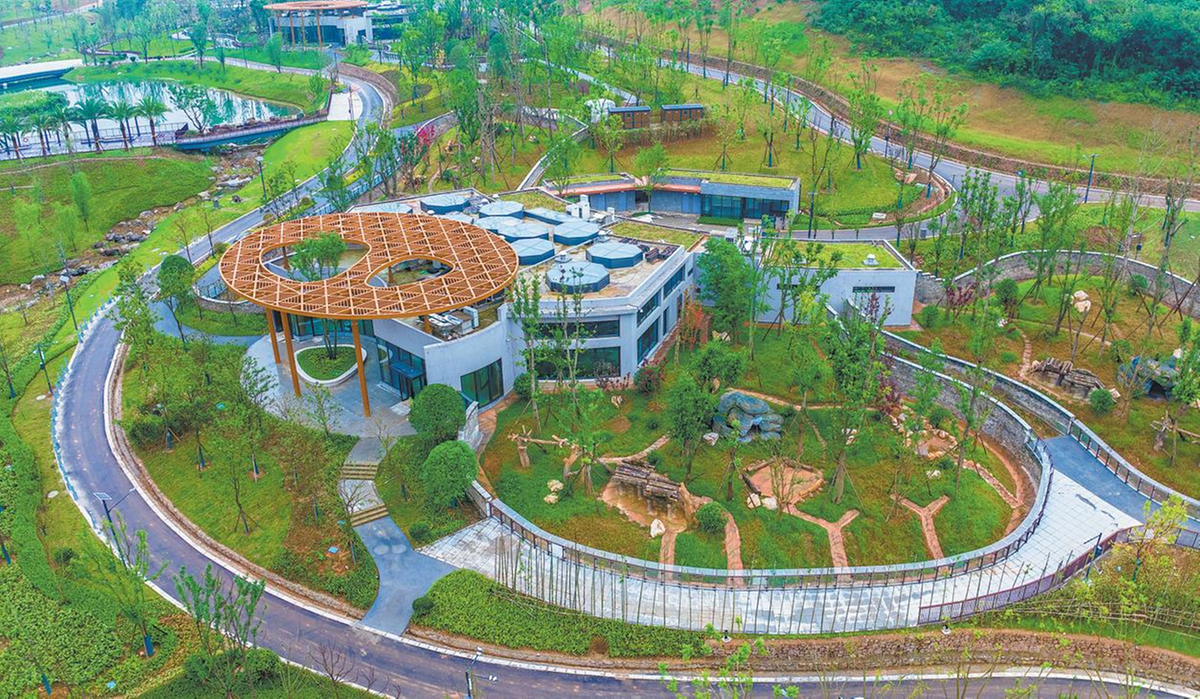Mianyang giant panda base begins trial operations


A new giant panda conservation and research base began trial operations on Tuesday in Mianyang, Sichuan province, with 13 pandas settling in the facility the same day.
The Mianyang base of the China Conservation and Research Center for the Giant Panda — a joint project between the National Forestry and Grassland Administration and the Mianyang city government — is developed and operated by the center and the Mianyang science and technology city new area.
The 13 pandas were relocated from the center's Wolong Shenshuping base and Dujiangyan base. Accompanied by their keepers and veterinarians, they arrived at the Mianyang base, which is located in the Guloushan ecological park in the Mianyang science and technology city new area, on Tuesday morning.
Huang Zhi, head of the management and operation branch of the Mianyang base's preparatory working team, said the newly arrived pandas include juveniles, adults and elderly ones.
"The giant pandas are a little bit nervous in the new environment, but they are generally in good condition," Huang said.
To help the pandas adapt smoothly, experienced keepers and veterinarians will closely monitor their health through daily feedings, behavioral observation and 24-hour surveillance, he said.
The base will open to the public after the pandas complete their adaptation period.
Covering about 120 hectares, the new base has 50 enclosures designed to meet the pandas' habitat requirements. Preparations for facilities, environmental enrichment, food supply and staffing were completed in advance, officials said.
Leveraging Mianyang's technological strengths, the base aims to optimize giant panda conservation and research work and bolster efforts to protect the wild giant panda populations in the Minshan Mountains, officials said.
According to the fourth national giant panda census, 418 wild pandas live in the Mianyang section of Giant Panda National Park, accounting for about 22.4 percent of the country's total — the highest number among China's prefecture-level cities.
In October 2021, China established the Giant Panda National Park to provide strict protection for about 72 percent of the wild giant panda population. The park covers more than 22,000 square kilometers across Sichuan, Shaanxi and Gansu provinces.
Since the 1980s, researchers at the China Conservation and Research Center for the Giant Panda have overcome three major challenges in breeding captive giant pandas — estrus, mating and cub survival.
The center's captive panda population has grown from six in 1983 to more than 380 today — the largest in the world — and now enjoys self-sustaining growth with improved genetic diversity.

Today's Top News
- Imperative EU adopt cooperative approach to global climate action: China Daily editorial
- Sensationalism detrimental to dialogue: China Daily editorial
- Xi congratulates Samia Suluhu Hassan on assuming presidency of Tanzania
- Xi stresses adopting high standards for building Hainan Free Trade Port
- China, Samoa exchange congratulations over 50th anniversary of ties
- Transform food systems for a hunger-free world






























